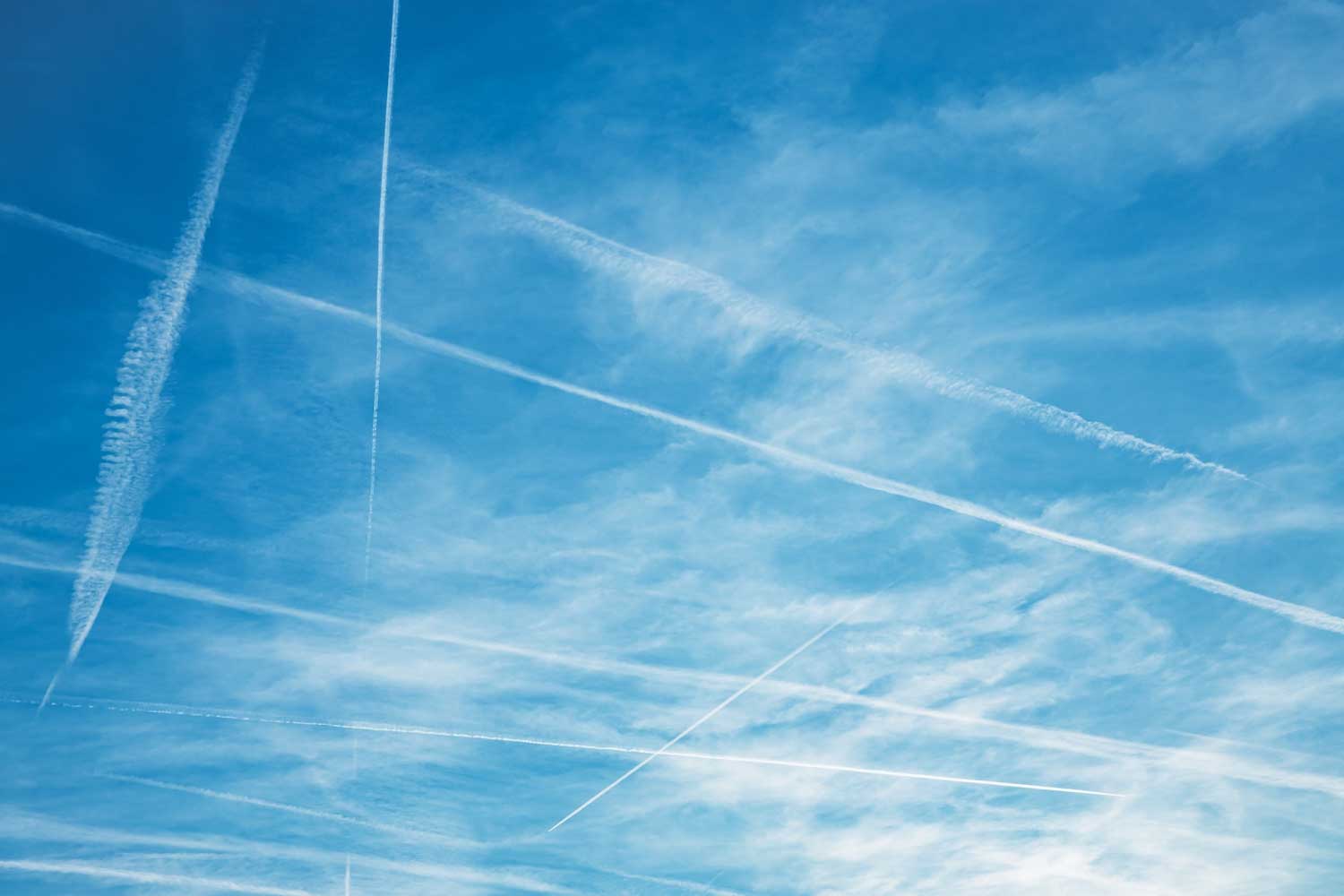Nature curiosity: What are contrails and how do they form?

Those long, thin clouds you sometimes see crisscrossing the sky aren't really clouds, at least not naturally occurring clouds. They are contrails, which are manmade clouds created from the exhaust of jet planes.
Contrails are trails of condensation from jet engines that are created when planes pass overhead, according to the National Weather Service. The word contrail is a shortened form of condensation trail.
Jet engines create hot, humid air, and as this hot, humid air is emitted into the atmosphere as exhaust, it mixes with air with low vapor pressure and a low temperature. This allows these long, thin clouds containing ice crystals to form when the two air masses are combined by the turbulence created by the jet engines, the weather service reports.
We often see contrails in the sky overhead, so we mostly associate them with jets. However, rockets and spacecraft create contrails too, because they also emit hot, humid air into colder, drier air during launch or liftoff, Space.com reports.
The process of how contrails form is similar to what happens when we exhale into the cold air and can see our breath. Our breath is hot and humid, much warmer and more humid than the cold, dry winter air we are exhaling into. Just like the jet exhaust creates a cloud when it mixes with the cold, dry air in the atmosphere, so does our warm breath when it mixes with the cold air.
Have you noticed that your breath doesn't always leave a cloud in the winter air? The same is true of jet planes. Contrails don't always form in their wake, and even when they do, how long they remain visible varies. We most often see contrails from planes flying at a cruising altitude of between 32,000 and 42,000 feet above the ground. This is because the conditions at that altitude are most suitable for contrail formation, Space.com reports.
How long a contrail will remain visible — or how long your breath remains visible — is related to how much humidity is in the atmosphere. The drier the atmosphere is, the less time a contrail will remain visible; the more humid it is, the longer it will last, according to the National Weather Service. When humidity levels are too low, contrails won't form at all.
In humid conditions, contrails also get bigger because ice crystals get larger as they take in water from the surrounding atmosphere, according to the U.S. Environmental Protection Agency. They can also spread out because of wind, turbulence created by the plane and even the effects of the sun. In some cases, a contrail can grow to several kilometers wide, and they can remain visible in the sky for hours.
When contrails remain in the air for a long time, they contribute to cloud cover, which in turn can affect weather. At any given time, contrails are estimated to cover about 0.1% of Earth's surface, according to the EPA. Contrail coverage is greatest in areas where jet travel is most common, particularly the United States and Europe.
Climate scientists study contrails for a couple of reasons. First, contrails can essentially form cirrus clouds, and the cloud cover generated by these manmade clouds can reflect sunlight away from Earth's surface and also hinder heat loss. In addition, the exhaust from the jets may also change the chemistry of the upper levels of Earth's atmosphere, which over time could affect climate.
A conspiracy theory has circulated for many years that long-lasting contrails are the result of government efforts to dispose of toxic waste and chemicals, but this is not based in fact. The size and duration of a contrail is directly related to the atmospheric conditions at the time a jet flies overhead and nothing more.
